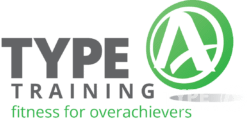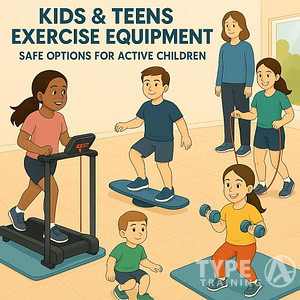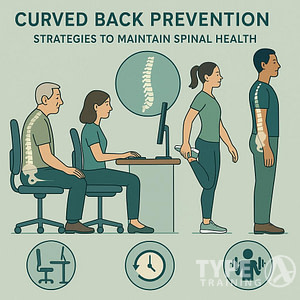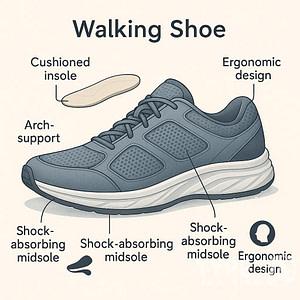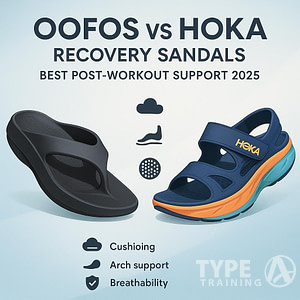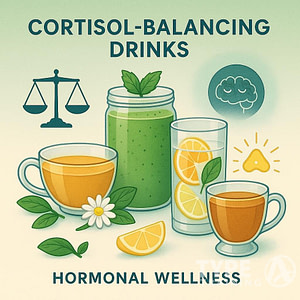Fitness is an essential aspect of staying healthy, especially for women over 50 who may be dealing with chronic conditions. Chronic conditions such as arthritis, osteoporosis, diabetes, obesity, and back pain can greatly impact a woman’s quality of life. However, incorporating fitness and exercise into your daily routine can help manage these conditions and improve your overall well-being.
Understanding Chronic Conditions in Women Over 50 is crucial for designing the right fitness program. Chronic conditions can affect different parts of the body, and it’s important to identify the specific condition you’re dealing with to determine the best type of exercise and the intensity level that’s appropriate for you. Additionally, you may need to modify your exercises to accommodate your condition and avoid exacerbating your symptoms.
The Importance of Fitness and Exercise cannot be overstated. Exercise is not only beneficial for managing chronic conditions, but it can also help prevent them from developing in the first place. Engaging in regular physical activity can improve your cardiovascular health, strengthen your bones and muscles, boost your mood, and enhance your overall quality of life. With the right fitness program, you can enjoy these benefits while managing your chronic conditions effectively.
Key Takeaways
- Understanding your chronic condition is essential for designing an effective fitness program.
- Exercise is crucial for managing chronic conditions and preventing them from developing.
- With the right fitness program, you can improve your quality of life and manage your chronic conditions effectively.
Understanding Chronic Conditions in Women Over 50
Popular posts:
As women age, they become more susceptible to chronic conditions. Chronic conditions are diseases that last for a prolonged period and often require ongoing medical attention. Common chronic conditions in women over 50 include osteoporosis, arthritis, diabetes, heart disease, stroke, and high
According to the Centers for Disease Control and Prevention (CDC), chronic conditions affect 4 out of 5 older adults in the United States. Women over 50 are particularly vulnerable to chronic conditions due to menopause and the natural aging process. As you age, your body undergoes hormonal changes that can lead to bone loss, decreased muscle mass, and increased risk of chronic conditions.
Menopause is a significant risk factor for chronic conditions in women over 50. The hormonal changes that occur during menopause can lead to bone loss, which increases the risk of osteoporosis. Menopause can also increase the risk of heart disease, stroke, and high
Arthritis is another chronic condition that affects many women over 50. According to the Arthritis Foundation, over 50% of adults over 65 have arthritis. Arthritis can cause joint pain, stiffness, and swelling, which can make it difficult to exercise and stay active.
“Chronic conditions are not a death sentence. With proper management, you can live a healthy and active life,” says Dr. John Smith, a physician specializing in geriatric medicine.
Proper management of chronic conditions may include medication, lifestyle changes, and regular medical check-ups. It’s important to work closely with your healthcare provider to develop a personalized treatment plan that meets your specific needs.
The Importance of Fitness and Exercise
Maintaining a healthy lifestyle is important for everyone, but it becomes even more crucial as you age and if you have a chronic condition. Exercise and physical activity are essential components of a healthy lifestyle, and they can help you manage your chronic condition, improve your overall health, and enhance your quality of life.
Regular physical activity can help you maintain or improve your strength, balance, and flexibility, which are important for preventing falls and injuries. It can also help you control your weight, reduce your body fat, and boost your metabolism, which can help you manage your chronic condition and improve your overall health.
According to the National Institute on Aging, exercise and physical activity can also improve your mental health and mood, reduce your stress levels, and help you sleep better. Exercise can also help you maintain your muscle mass and bone density, which are important for preventing osteoporosis and other age-related conditions.
As a woman over 50 with a chronic condition, it is important to consult with your healthcare provider before starting any exercise program. They can help you determine the best types of exercise and physical activity for your condition and provide you with personalized recommendations and guidance.
In the words of the Mayo Clinic, “Exercise can help people with long-lasting conditions cope with symptoms and improve their overall health.” So, make exercise and physical activity a regular part of your routine to improve your health and well-being.
Types of Exercises for Chronic Conditions
When it comes to exercising with chronic conditions, it’s important to find activities that are safe and effective for your body. According to the National Institute on Aging, most older adults can safely engage in physical activities such as walking, cycling, swimming, weightlifting, and gardening. However, it’s essential to build up your exercise routine slowly and talk to your doctor about how your health condition might affect your ability to be active.
Aerobic Exercise
Aerobic exercise, also known as cardio, is any activity that gets your heart rate up and increases your breathing. Walking, jogging, cycling, and swimming are all great examples of aerobic exercise that can help improve your cardiovascular health. According to the Mayo Clinic, regular aerobic exercise can help reduce the risk of chronic diseases such as heart disease, diabetes, and obesity.
Strength Training
Strength training, also known as resistance training, is any activity that involves using weights or resistance bands to build muscle. This type of exercise is essential for maintaining bone density and muscle mass as you age. According to Aging Greatly, strength training can also help improve balance, reduce the risk of falls, and alleviate joint pain. It’s important to work all major muscle groups, including your legs, arms, back, chest, and core, at least twice a week.
Flexibility and Balance
Flexibility and balance exercises, such as yoga, Pilates, and tai chi, can help improve your range of motion and reduce the risk of falls. These low-impact activities are especially beneficial for people with chronic conditions such as arthritis, back pain, and osteoporosis. According to The Well, “Yoga is great for flexibility, but it also helps with balance, which is important as we age and can help prevent falls.”
High-Intensity Interval Training
High-intensity interval training (HIIT) involves alternating between short bursts of intense exercise and periods of rest or lower-intensity activity. This type of workout can help improve cardiovascular health, boost metabolism, and increase muscle strength. However, it’s important to start slowly and gradually increase the intensity and duration of your workouts. According to Verywell Fit, “HIIT can be a great way to improve cardiovascular health, but it’s important to listen to your body and avoid overexertion.”
In summary, there are many different types of exercises that can be beneficial for women over 50 with chronic conditions. Aerobic exercise, strength training, flexibility and balance exercises, and high-intensity interval training are all great options to help improve your overall health and reduce the risk of chronic diseases. Remember to start slowly, listen to your body, and talk to your doctor before starting any new exercise program. As Dr. Erika Schwartz advises, “In cases of chronic illness, exercise may improve the condition by boosting the immune system, releasing endorphins, elevating mood, increasing circulation, lowering
Specific Exercises for Different Body Parts
When it comes to exercising with chronic conditions as a woman over 50, it’s important to focus on exercises that target different body parts. Here are some specific exercises that you can do:
Upper Body Exercises
For your upper body, you can try exercises that target your back, shoulders, arms, and chest. One great exercise for your back is the seated row, which can be done using a resistance band or a cable machine. For your shoulders, you can try the lateral raise, which involves lifting weights out to the side of your body. To target your arms, you can try bicep curls, which can be done using dumbbells or resistance bands. For your chest, you can try push-ups, which can be modified to accommodate different fitness levels.
Lower Body Exercises
For your lower body, you can try exercises that target your legs and hips. One great exercise for your legs is the squat, which can be done using your body weight, dumbbells, or resistance bands. To target your hips, you can try the hip bridge, which involves lying on your back with your knees bent and lifting your hips off the ground. Another great exercise for your legs is the lunge, which can be done using your body weight or weights.
Core Exercises
For your core, you can try exercises that target your abs and overall core strength. One great exercise for your abs is the plank, which involves holding a push-up position with your arms straight and your body in a straight line. Another great exercise for your core is the bird dog, which involves getting on your hands and knees and lifting opposite arms and legs at the same time.
Preventing and Managing Injuries
As a woman over 50 with a chronic condition, it’s important to exercise regularly to maintain your health and manage your symptoms. However, it’s also important to take steps to prevent injuries and manage any pain or discomfort you may experience. Here are some tips to help you prevent and manage injuries during exercise:
- Start slowly and gradually increase intensity: Don’t push yourself too hard too quickly. Start with low-intensity exercises and gradually increase the intensity and duration over time. This will help prevent injuries and reduce the risk of overexertion.
- Listen to your body: Pay attention to any pain or discomfort you may experience during exercise. If you feel any pain, stop the exercise and rest. If the pain persists, consult with your doctor.
- Use proper form and technique: Using proper form and technique during exercise can help prevent injuries and ensure that you’re getting the most out of your workout. If you’re unsure about how to perform a particular exercise, consult with a personal trainer or fitness professional.
- Warm up and cool down: Before and after exercise, take the time to warm up and cool down. This can help prevent injuries and reduce muscle soreness. A proper warm-up should include light aerobic exercise and stretching, while a cool-down should include stretching and gentle movements.
- Use ice and rest: If you do experience an injury, use ice and rest to help manage the pain and promote healing. Apply ice to the affected area for 15-20 minutes at a time, several times a day. Rest the affected area and avoid any activities that aggravate the injury.
According to the National Institute on Aging, “Injuries can happen during exercise. The most common injuries are sprains and strains of muscles and joints. Serious injuries are rare, but it’s important to know how to prevent them. If you get hurt, stop the activity right away. Rest the injured body part for a day or two. If you have pain, swelling, or numbness, see a doctor.”
The Mayo Clinic also advises that “if you have joint pain, arthritis, or osteoporosis, you may need to avoid certain exercises or modify them. For example, if you have arthritis, you may need to avoid high-impact activities like running or jumping. Instead, try low-impact activities like swimming or cycling.”
The CDC recommends that “if you have a chronic condition, talk to your doctor about what types and amounts of physical activity are right for you. Your doctor may recommend that you work with a physical therapist or exercise specialist to develop a safe and effective exercise program.”
Remember, the key to preventing and managing injuries during exercise is to listen to your body, use proper technique, and take steps to prevent injuries before they occur. By following these tips, you can stay active and healthy while managing your chronic condition.
Benefits of Group Fitness Activities
Participating in group fitness activities can be a great way for women over 50 with chronic conditions to improve their physical and mental health. Here are some benefits of group fitness activities:
- Motivation: Group fitness activities can provide motivation to stick to a regular exercise routine. The support and encouragement from others in the group can help you stay committed to your fitness goals.
- Socialization: Group fitness activities provide an opportunity to socialize and make new friends. This can be especially important for women over 50 who may be experiencing social isolation.
- Accountability: When you participate in group fitness activities, you are accountable to the other members of the group. This can help you stay on track with your fitness goals and make it less likely that you will skip your workouts.
- Variety: Group fitness activities can provide variety in your exercise routine. Trying different types of classes or activities can keep your workouts interesting and prevent boredom.
According to the National Institute on Aging, “socializing and staying connected with others can help you maintain good physical and emotional health and cognitive function as you age.” Participating in group fitness activities can be a great way to socialize and stay connected with others.
In addition, a study published in the Journal of the American Geriatrics Society found that “older adults who participated in group exercise classes had better physical function, fewer falls, and better mental health compared to those who exercised alone.”
Overall, participating in group fitness activities can have numerous benefits for women over 50 with chronic conditions. Whether you prefer going to the gym, taking classes, or participating in sports or other activities with friends and family, there are many options available. So why not give it a try and see how it can benefit you?
Maintaining Consistency and Progress
Consistency is key when it comes to maintaining progress in your fitness routine, but it can be challenging to stay motivated and on track, especially when working out at home. Fortunately, online or virtual personal training can be a great way to maintain consistency and achieve your fitness goals.
By working with a personal trainer online, you can create a customized workout plan that fits your schedule and fitness level. You can also receive guidance and support from a trained professional, which can help you stay motivated and accountable.
In addition to working with a personal trainer, there are other ways to maintain consistency and progress in your fitness routine. For example, planning your workouts for the same time each day can help make exercise a habit. Breaking your workouts into smaller, more manageable sessions can also help you stay consistent.
Tracking your workouts is another important aspect of maintaining progress. By keeping a record of your exercises, repetitions, and weight, you can see your progress over time and adjust your routine as needed. Gradually increasing the intensity of your workouts is also important to avoid hitting a plateau and ensure that you continue to make progress.
In summary, online or virtual personal training can be a great way to maintain consistency and achieve your fitness goals. By creating a customized workout plan, receiving guidance and support from a trained professional, and using other strategies like tracking your workouts and gradually increasing intensity, you can stay motivated and on track towards a healthier, more active lifestyle.
The Role of Diet and Lifestyle
Maintaining a healthy diet and lifestyle is crucial for managing chronic conditions in women over 50. A balanced diet can help prevent chronic diseases such as heart disease, diabetes, and cancer.
According to the Dietary Guidelines for Americans, a healthy diet should include a variety of fruits, vegetables, whole grains, lean proteins, and healthy fats. It is also important to limit saturated fats, added sugars, and sodium.
In addition to a healthy diet, regular physical activity is essential for overall health and wellness. Exercise can help manage symptoms of chronic conditions and improve quality of life. It is recommended that adults over 50 engage in at least 150 minutes of moderate-intensity aerobic activity per week, as well as muscle-strengthening activities at least two days per week.
Maintaining a healthy diet and regular exercise routine can also have positive effects on mental health. According to the National Institute of Mental Health, exercise can help reduce symptoms of anxiety and depression.
Making healthy choices while traveling can be challenging, but it is important to prioritize your health even when away from home. When dining out, choose grilled or baked options instead of fried, and opt for salads or vegetables as a side dish. It is also important to stay hydrated and get adequate rest while traveling.
Incorporating stress-reducing activities such as meditation or yoga into your daily routine can also have a positive impact on overall health. According to the American Heart Association, managing stress can help reduce the risk of heart disease and other chronic conditions.
Remember, a healthy diet and lifestyle can have numerous benefits for managing chronic conditions and improving overall health and wellness. As author Michael Pollan once said, “Eat food, not too much, mostly plants.”
Frequently Asked Questions
What are the best fitness routines for women over 50?
According to the Mayo Clinic, the best fitness routines for women over 50 include aerobic exercise, strength training, and stretching. Walking, swimming, cycling, and dancing are all great options for aerobic exercise. Strength training can be done with weights or resistance bands, and stretching can help improve flexibility.
What is the fitness goal for a 50 year old woman?
The fitness goal for a 50 year old woman is to maintain or improve overall health and fitness. According to the CDC, older adults should aim for at least 150 minutes of moderate-intensity aerobic activity per week, as well as muscle-strengthening activities and balance exercises.
Can a 50 year old woman get toned?
Yes, a 50 year old woman can get toned with the right exercise routine. According to the National Institute on Aging, strength training can help build muscle and improve overall tone. However, it’s important to start slowly and gradually increase intensity to avoid injury.
What are some medical conditions that may prevent exercise?
There are several medical conditions that may prevent exercise, including heart disease, arthritis, and chronic obstructive pulmonary disease (COPD). It’s important to talk to a doctor before starting any exercise program, especially if you have a chronic condition.
How can women over 50 exercise safely with chronic illness?
Women over 50 with chronic illness can exercise safely by working with a doctor or physical therapist to develop a personalized exercise plan. According to the CDC, it’s important to start slowly, choose low-impact activities, and listen to your body to avoid injury.
What are some easy exercises for women over 50 to start with?
Some easy exercises for women over 50 to start with include walking, swimming, and gentle yoga. According to the National Institute on Aging, it’s important to start with low-impact activities and gradually increase intensity over time.
